How this hairless creature survives harsh Canadian winters
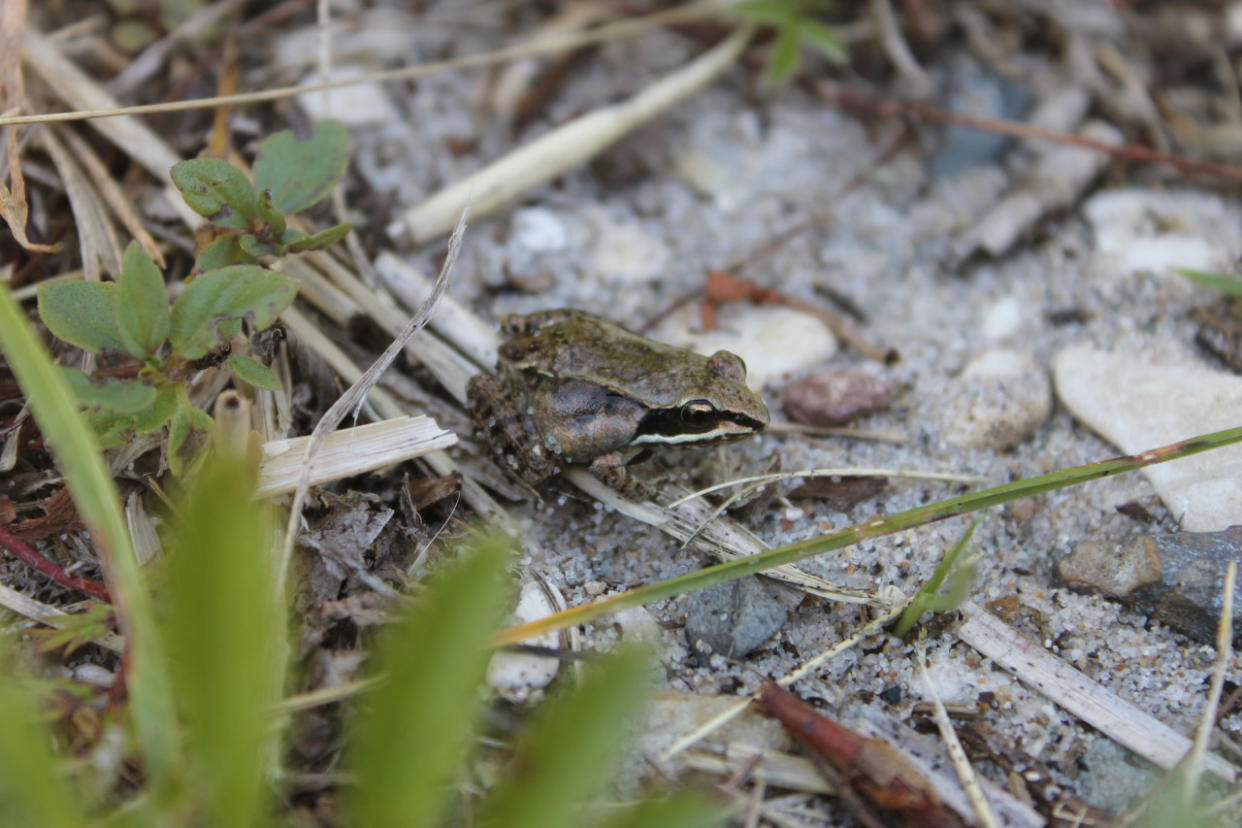
Some animals in Canada will chill off so much in winter that they actually freeze, ensuring their survival through the harsh months.
Such is the case with the wood frog. To ensure it can make it through the cold months, a wood frog's body will shut down while it is surrounded by ice, lacking a heartbeat and breath in its lungs.
SEE ALSO: What role can AI play in helping vulnerable species and habitats?
Here's where it gets more interesting during the winter for the amphibian species, which can be found in forests and wetlands across the country.
According to Ducks Unlimited Canada, once the temperature drops, the wood frog's liver transforms its fat reserves accumulated over the summer into levels of blood glucose up to 80 times higher than those found in humans. To put it into a loose comparison, the blood becomes similar to antifreeze, in a way.
James Paterson, research scientist with Ducks Unlimited Canada, clarified the distinction in the antifreeze similarity in a recent interview with The Weather Network.
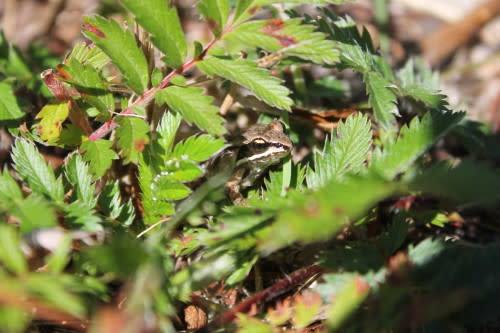
Wood frog. (James Paterson/Ducks Unlimited Canada)
"It's not like antifreeze with the same sort of chemicals, [but] the idea is that when the concentration [of blood glucose] is really, really high, it severely reduces the freezing point of that liquid," said Paterson.
The outcome allows the wood frog to stop its blood from freezing, keeping vital organs protected –– even as ice forms in the surrounding space outside its cells.
Wood frogs are 'super-unique' amphibians
Like other wildlife species, the process for wood frogs to prepare for the winter is temperature-driven, Paterson noted. Wood frogs will spend winter on land, usually tucked underneath leaves or logs.
"They're eating at the end of the summer and they're building up energy reserves. The exact timing of that really varies across Canada," said Paterson.
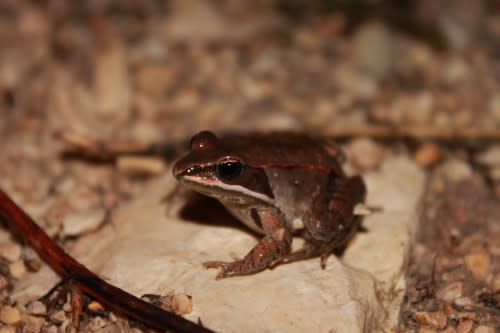
Wood frog. (James Paterson/Ducks Unlimited Canada)
Because they can be found across the country, Paterson said wood frogs are "super-unique among our amphibians" since they will start preparing for winter at different times in each province and territory.
"The time [when] it gets cold is very different in southern Ontario versus the Northwest Territories," he said.
As seen in Canada, winter can offer temperature swings and snowmelts, which can have negative effects on the species, Paterson said.
When they hide under leaf litter for the winter, "ideally," the temperature swings wood frogs experience will be moderated by the snow cover on top of them. Having the cover helps insulate changes that fluctuate through the year, except near the beginning of the season when there is not as much buffer, for example.
DYK the wood frog is the most widely distributed frog in Canada? It can be found all the way up to the Arctic Circle! 🐸 😰 Brrrrr! pic.twitter.com/YIh84M9LIV
Credit Valley Conservation on Twitter: "#DYK the wood frog is the most widely distributed frog in Canada? It can be found all the way up to the Arctic Circle! 🐸 😰 Brrrrr! pic.twitter.com/YIh84M9LIV / Twitter" the wood frog is the most widely distributed frog in Canada? It can be found all the way up to the Arctic Circle! 🐸 😰 Brrrrr! Credit Valley Conservation on Twitter: "#DYK the wood frog is the most widely distributed frog in Canada? It can be found all the way up to the Arctic Circle! 🐸 😰 Brrrrr! pic.twitter.com/YIh84M9LIV / Twitter"
— Credit Valley Conservation (@CVC_CA) Credit Valley Conservation on Twitter: "#DYK the wood frog is the most widely distributed frog in Canada? It can be found all the way up to the Arctic Circle! 🐸 😰 Brrrrr! pic.twitter.com/YIh84M9LIV / Twitter"
"So, they typically are going to tuck in [and] start to cool down their body temperatures. The ground gets cold, and then, when the snow comes, their body temperatures, hopefully, are going to be more constant rather than going up and down really quickly," said Paterson.
Even though Canada experienced a warmer-than-normal December in 2023, wood frogs would still have been ready for winter before the first freeze since they are ectothermic, or cold-blooded as it's common called, Paterson said.
Their metabolism "directly" depends on their body temperatures, so once the colder air arrives, the wood frogs can't move much as a result of the limitations in how fast they metabolize energy.
"By the time the first kind of wave of cold temperature comes, they have to be ready and tucked away where they're going to spend most of the winter," said Paterson.
Microbes, glucose levels key for protection against the cold
Paterson noted wood frogs will need to acquire enough glucose so their vital organs don't freeze. However, the amount needed won't be excessive since the energy they actually use is not "super-high" when compared to some mammals preparing for hibernation. It is because their body temperatures and metabolism dips so low in the winter.
The North American wood frog can freeze and thaw itself repeatedly over winter when temperatures get too cold. If you drop one while it's frozen, it will make a "clinking" sound. (Photo credit: DDauri) pic.twitter.com/OusYXkGmkD
The North American wood frog can freeze and thaw itself repeatedly over winter when temperatures get too cold. If you drop one while it’s frozen, it will make a “clinking” sound. (Photo credit: DDauri) Quite Interesting on Twitter: "The North American wood frog can freeze and thaw itself repeatedly over winter when temperatures get too cold. If you drop one while it's frozen, it will make a "clinking" sound. (Photo credit: DDauri) pic.twitter.com/OusYXkGmkD / Twitter"
— Quite Interesting (@qikipedia) Quite Interesting on Twitter: "The North American wood frog can freeze and thaw itself repeatedly over winter when temperatures get too cold. If you drop one while it's frozen, it will make a "clinking" sound. (Photo credit: DDauri) pic.twitter.com/OusYXkGmkD / Twitter"
"Their heart rate actually stops during the winter when they freeze. They're not burning almost any energy," said Paterson. "As long as they get some meals before, and then they start producing that glucose, they're going to be prepared."
How wood a frog can reappear from the winter unharmed is partly to do with retaining urine, according to DU Canada. Microbes situated in the gut recycle urea into the body where it protects tissues from the cold.
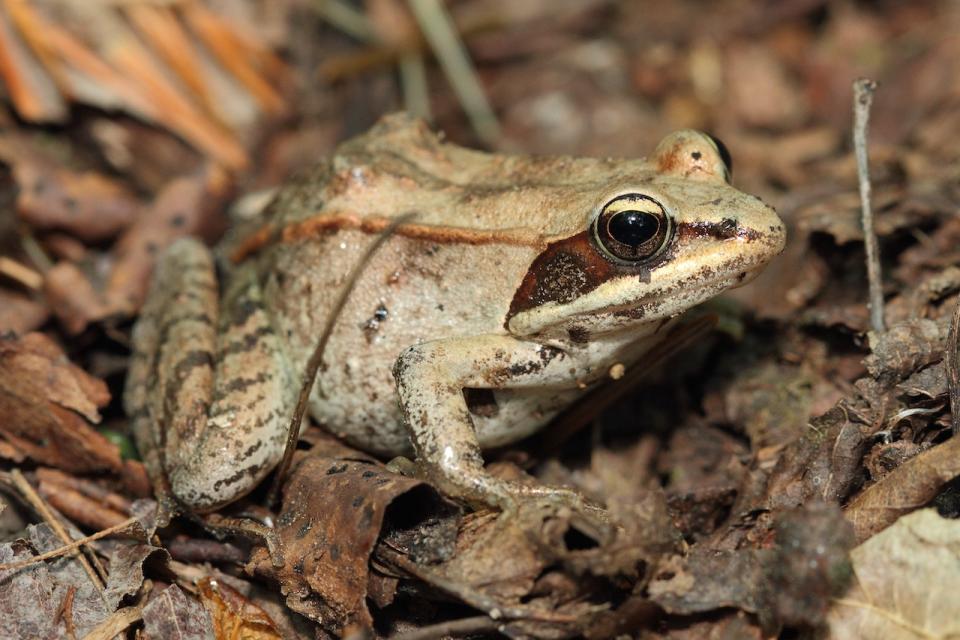
Wood frog. (Getty Images/Yves Dery -1281136363)
Paterson said some studies in the lab have suggested that the colder the temperature, the less amount of time a living organism can sustain itself at that particular value.
He did say, however, that in remote areas such as the Northwest Territories, wood frogs can be safely frozen for six months at least. They will then thaw in the spring, unscathed, and "wake up" as if they were sleeping.
"Once they start to thaw, as the body temperature warms up, their metabolism kind of wakes up and they start processing it, removing that glucose," said Paterson.
Amphibian species facing extinction due to climate change
A paper published in October 2023 in Nature reveals climate change is a growing threat to frogs. Two in every five, or about 41 per cent, amphibian species are threatened with extinction.
"Ongoing and projected climate change effects are now of increasing concern, driving 39 per cent of status deteriorations since 2004," the study's authors noted.
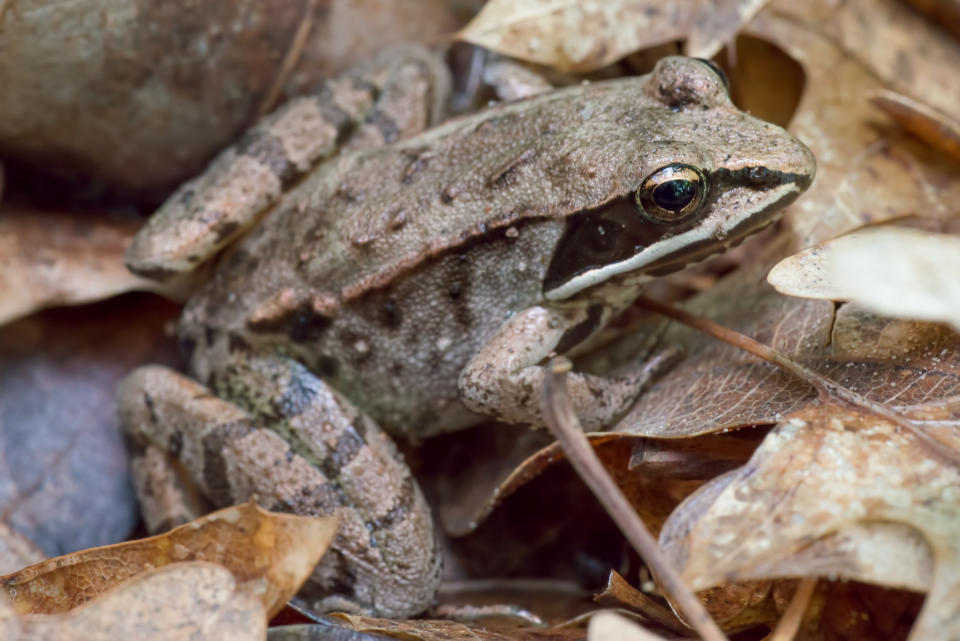
Wood frog. (Getty Images/Bob Grif -1160883901)
While habitat loss is still the main cause of the amphibian decline, climate change is becoming a "major driver of extinction risks" and will continue to become more important in the future, Paterson said.
He noted the impacts of it will differ among the various frog species. So, with wood frogs, it means they're going to "win in some places and maybe lose in others."
"We know that climate change isn't equal across the landscape. [In] some places, it's going to get warmer, and in other places, it might get cooler or more wetter," said Paterson.
When looking at the direct implications for wood frogs, it's difficult to state outright if they will do better or worse under climate change, he added.
"It's more accurate to say that in some places, they're going to win, and in other places, they're going to lose. But, generally, it's going to affect where they're able to survive," said Paterson.
WATCH: This frog species is getting darker, why that's a good thing
Thumbnail courtesy of James Paterson/Ducks Unlimited Canada.
Follow Nathan Howes on the X platform, formerly known as Twitter.

